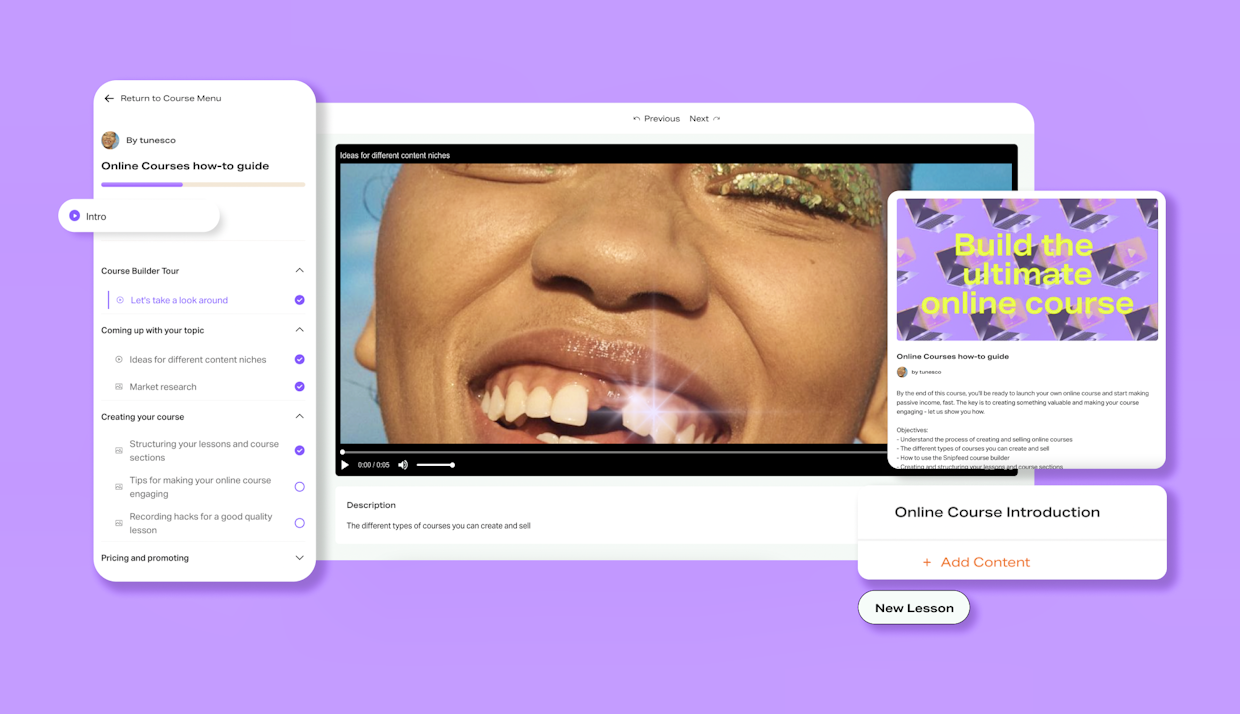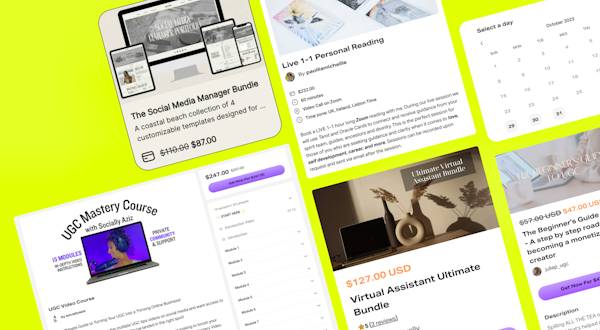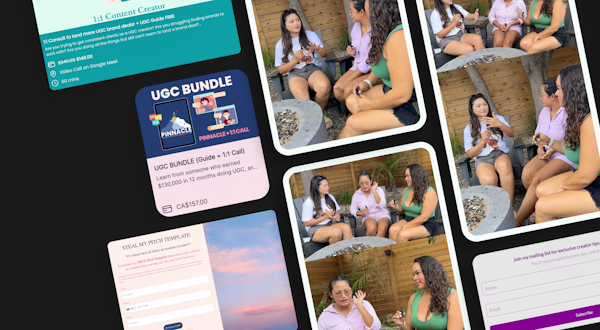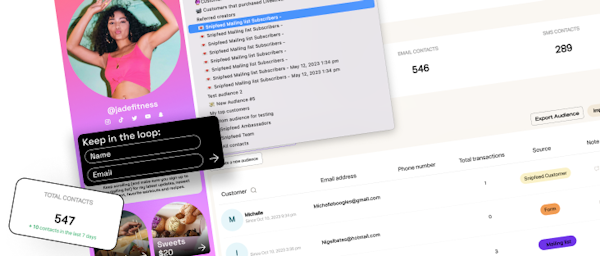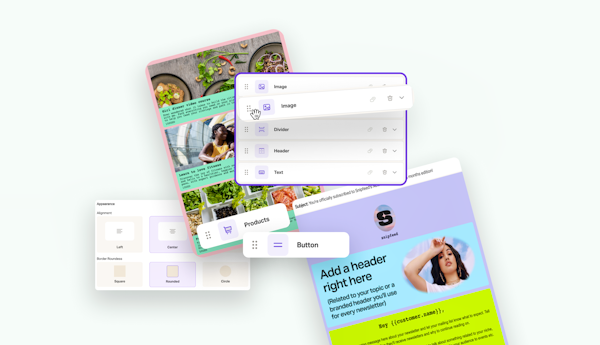Easily build your very own Online Course using Snipfeed’s new monetization feature. Follow these 8 steps and you’ll be ready to start getting paid to share what you know.
Think you’re not in the right content niche to be able to share what you know and monetize your content with Online Courses? Wrong. If you have something to share with the world and community ready to get behind you, you’re off to a great start.
Check out the features available on the new online courses feature here and take the free online course created by Snipfeed to learn everything there is to know about creating a course that sells.
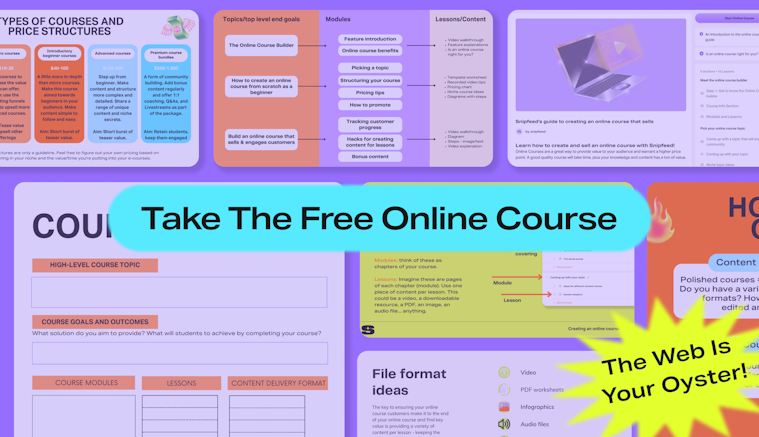
The value of offering online courses
This offering goes beyond basic skill sharing and talking at the camera. Think of your online course as a bundle of exclusive, never-seen-before content that teaches your audience something they didn’t know before - but in a structured, interactive way.
Delve deeper into a particular subject, nurture your community, and generate more passive revenue than ever.
Firstly, Online Courses are a great way to provide value to your audience and warrant a higher price point. A good quality course will take time, plus your knowledge and content has a ton of value (we’ll discuss pricing later on in the blog).
#1 Pick your online course topic
Firstly, it’s important to consider the needs of your community and the market demand. Aim to solve a solution through your content. Start by doing some research on the type of topics that are popular in your niche and read up on industry trends to get an idea of what people are looking for.
Once you have a few ideas, make sure to test them out with your target audience before committing to a particular topic. This will help ensure that your online course will be a success (you could do this on social media using Polls on Instagram Stories, or posting content on TikTok addressing your followers directly).
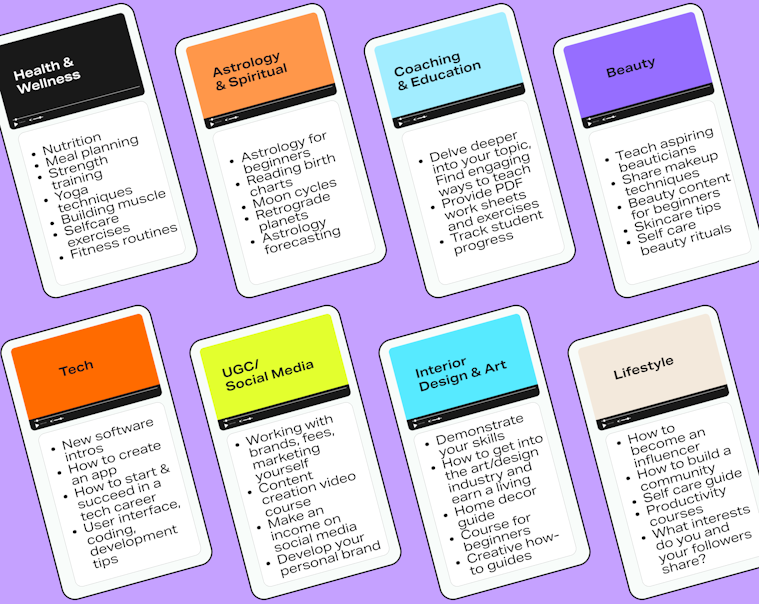
#2 Lay out the value of your online course
Start by defining the end goal of the course and what your students will be able to take away from it. Then, break down the course content into smaller, achievable objectives that build upon each other - add this content to the description of your course when you’re getting set up.
Make sure to keep your learning outcomes relevant to your followers, so they can easily identify the value of the course. Finally, make sure to keep your outcomes measurable so you can track progress and ensure that your students are getting the most out of your course.
For example, you might suggest that after taking your intuitive cooking course, your followers will be able to cook a 10 minute meal without looking up a recipe.
#3 Structure your lessons
Structuring your lessons and modules is essential for creating an effective online course. Start by breaking down the course into modules based on the main topics that you want to cover.
Then, think about how you can use different learning methods to deliver each module. This could include videos, audio recordings, presentations, images, PDF worksheets, and more. Once you’ve determined the best delivery methods for each module, you can then create the structure of your lessons.
Make sure to include a variety of activities such as quizzes, assignments, and discussions to keep your students engaged.
#4 Film, record, create resources (tips)
Producing your online course is an important step that requires time, energy, and resources. Make sure to use high-quality equipment and lighting to ensure a professional look.
If you don’t have access to professional equipment, you can use software like Zoom or Skype to record your lessons and demonstrate what you’re teaching by sharing your screen.
Once you’ve recorded your content, you can then start the editing process. This includes trimming, cutting, and adding transitions to make your course look polished. Finally, make sure to add captions and subtitles to make your course accessible to all viewers.
#5 Price your online course
Pricing your online course is a crucial step that requires careful consideration. Start by researching the prices of similar courses in your niche and see what the market is willing to pay.
Then, factor in your own time and resources and decide what price point that means you’re paid fairly.
Finally, consider launching courses with different levels of complexity. This means you can introduce different pricing tiers that offer different levels of value - for example, you might have a starter course, then a premium course that will have new content uploaded every month! (skip to the last point to read more about this)
#6 Promote your course on socials
When it comes to spreading the word about your course, 1) make sure your Snipfeed page is added to your social media bio’s. 2) communicate the value of your course through your content. Explain a pain point that needs solving, then describe how your course is the solution.
TikTok: Make sure to create engaging and entertaining content that showcases the value of your course. Utilize popular hashtags and trends to reach a larger audience - remember, TikTok is essentially a search engine for learning something new! Feel free to use the greenscreen feature to showcase your course as you speak about it organically.
Youtube: Create videos that showcase your course content and create a trailer to promote your course. Use annotations and cards to link to your course and encourage viewers to enrol via your Snipfeed in the caption.
Twitter: Share short snippets of your course content and create an effective hashtag to promote your course. Use promoted tweets to reach a larger audience.
Instagram: Create visually appealing images and videos to showcase your course and use effective hashtags in feed. Publish polls, question boxes, and engaging Instagram Stories to engage your audience, as well as Reels explaining the value of your course.
#7 Track your audience’s progress
Analyzing the progress bars on Snipfeed is an effective way to determine the success of your course. The progress bars provide insights into how many of your students have completed a particular lesson or module.
This will allow you to identify which lessons are resonating with your students and which ones may need more clarification or explanation. You can also use the progress bars to identify which topics may need to be adjusted or removed from your course. By analyzing the progress bars, you can ensure that your course is effective and that your students are receiving the full value of your course.
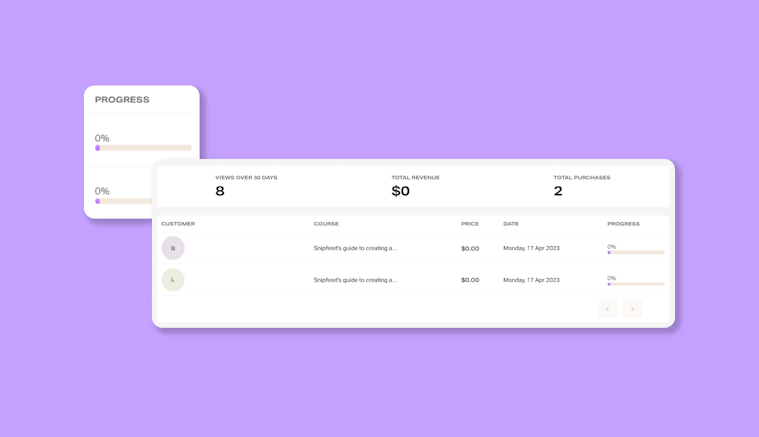
#8 Add bonus content to your courses
For paying customers who purchase your course, add on value by uploading bonus content to the course each month. Not only does this allow you to mark your online course at a higher price, but it’s great for community building and keeping your audience engaging with your content.
Bonus tip: set up the Zapier integration to link your Snipfeed with your emailing software (e.g. Convert Kit, MailChimp) and set up an emailing list. Now, every time a customer purchases your online course, they’ll be automatically added to your contacts list and you can notify them when new content is added ✨
Now you’re ready to go. We can’t wait to see what you come up with!

